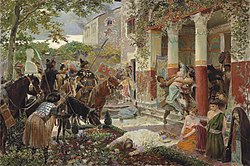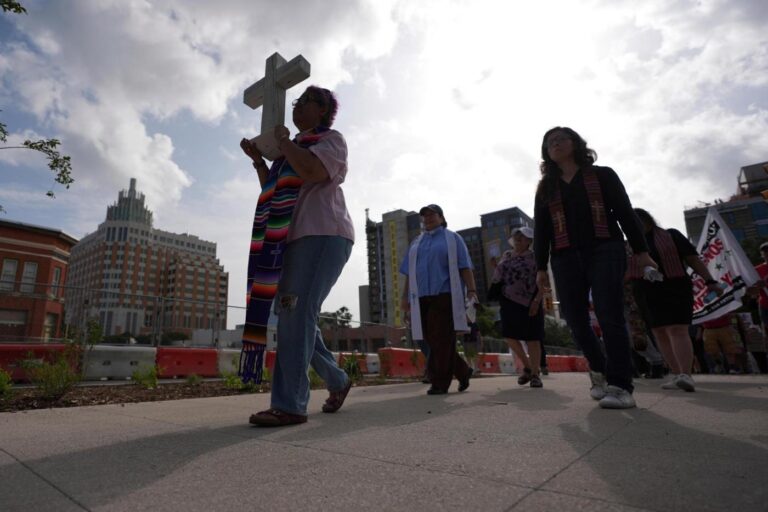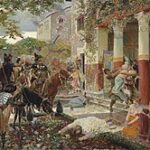In the year 451, as the infamous Attila the Hun advanced his forces across Europe, the city of Orléans in France found an unexpected hero in its bishop, Aignan. Born in 358 in Vienne, Dauphiné, Aignan became a pivotal figure in the defense of Orléans against the marauding Huns, led by Attila, who had already wrought havoc across the continent.
Upon the death of Bishop Euvertius, Aignan ascended to the position of bishop of Orléans. It was customary for the city to release prisoners upon the installation of a new bishop. However, Agrippinus, the city’s governor, initially refused to comply with this tradition. It was only after he fell ill that he relented, setting the prisoners free at Aignan’s request.
The Siege of Orléans
As Attila’s forces approached Orléans, panic gripped the city. Aignan, despite his advanced age, took charge of the city’s defense. He organized the citizens and sought assistance from the Roman general Flavius Aetius, traveling to Arles to plead for military support. His efforts were crucial in delaying the Huns until Aetius and his forces could arrive.
According to historical accounts, including those by Sidonius Apollinaris and Gregory of Tours, Aignan’s leadership was instrumental in the city’s survival. The Huns laid siege to Orléans, but after four days of heavy rain, their final assault was thwarted by the arrival of Roman reinforcements. This marked the beginning of Attila’s retreat, culminating in his defeat at the Battle of the Catalaunian Plains.
A Legacy of Faith and Leadership
Aignan’s actions during the siege left a lasting legacy. He was not only a religious leader but also a skilled negotiator and strategist. His ability to inspire and organize the city’s defense was seen as a divine intervention by many. A local legend even claims that Aignan invoked a miracle, causing a swarm of wasps to drive the Huns away.
“Saint Aignan contributed through prayer and his skill as a negotiator to save the city of Orléans, in 451, from total destruction by the Huns,” states a historical text exhibited in the collegiate church of Saint-Aignan in Orléans.
After his death in 453 at the age of ninety-five, Aignan was buried in the church of Saint-Pierre-aux-Bœufs in Orléans. His remains were later moved to the Monastery of Saint Lawrence. Despite some being destroyed by the Huguenots in 1562, the rest are preserved in a carved wood shrine in the Church of Saint Aignan, Orléans.
Commemoration and Cultural Impact
Saint Aignan is honored in the Roman Martyrology and the Paris Breviary, recognized as one of the patron saints of Orléans. His feast day, November 17, is celebrated with the Saint Aignan Fair, also known as the Pig Fair, a tradition that dates back several centuries. This event involves giving children a gingerbread pig with their name written on it.
Many churches across France bear his name, a testament to his enduring influence. The Church of Saint Aignan in Orléans, along with others in regions like Moselle and Jura, continue to commemorate his legacy. In art, he is often depicted praying atop the walls of Orléans, symbolizing his role as a protector and savior of the city.
In the 11th century, King Robert II of France built an abbey and church in Aignan’s honor, further cementing his status as a revered figure in French history. His story of courage and faith continues to inspire, highlighting the powerful impact of leadership and belief in the face of overwhelming odds.


























